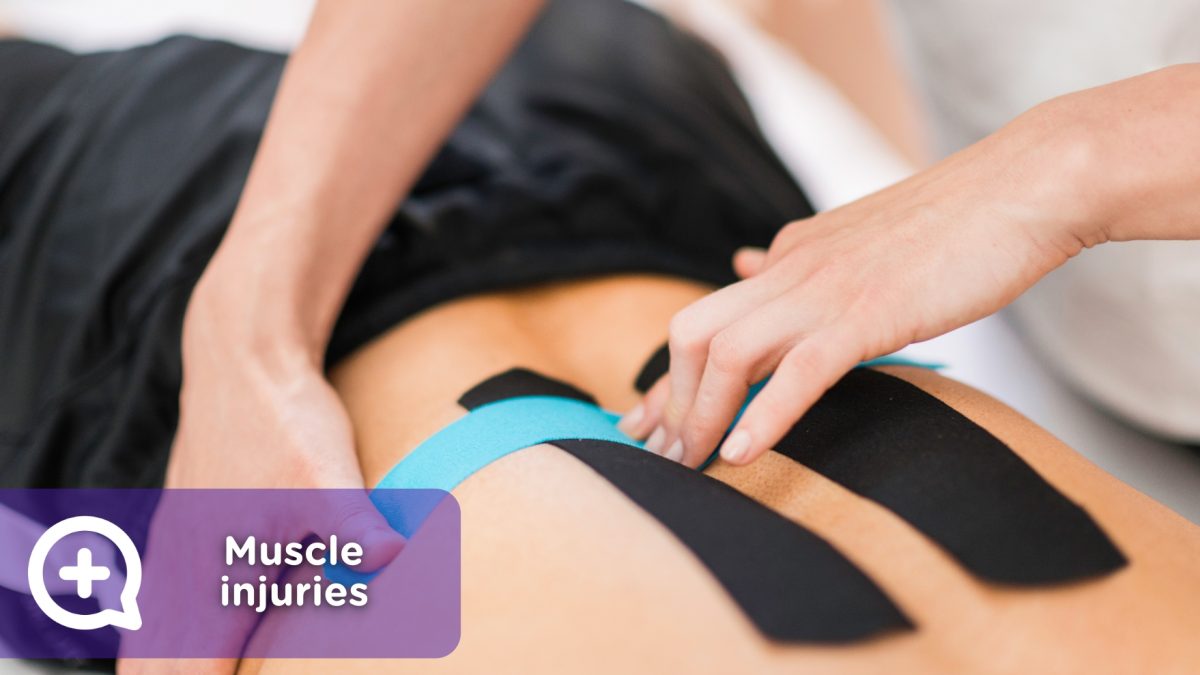Vacation is usually a good time to exercise. More free time, more pleasant and longer days influence us to go for a run, to play volleyball on the beach, a soccer game, etc… but, are we prepared? Many times we are not, and it ends with muscle injuries that we could have avoided with colored bandages, or rather, by applying “Kinesio Taping”.
What is a muscle injury?
Muscles are structures formed by a group of fibers that have the ability to generate movement through their contraction and relaxation.
Any painful abnormality that occurs in one of our muscles is what is known as a “muscle injury”. Sports injuries are the most common types of muscle injuries.
There are several types, depending on the severity:
- Delayed onset muscle soreness: is the muscle pain that appears 24-48 hours after intense and/or prolonged exercise. It is demonstrated through muscle fatigue and micr-burns. To prevent it, one must make a progressive adaptation to training or to the new exercise, as well as a suitable diet.
- Muscle cramp: it is an involuntary muscle contraction (or several) after going through a lot of effort/work. They usually last a short time, varying from a few seconds to a couple of minutes. To recover from it, one should stretch the muscle, massage the muscle gently, and apply moist heat.
- Muscle spasm: it occurs when the muscle tenses up involuntarily, in a painful and permanent way and triggers a state of rigidity. It can affect one or more muscles, or simply a fascicle. It is usually due to a particular overworked muscle. It does not subside spontaneously and usually requires specific treatment.
- Muscle strain: it occurs when a muscle is stretched in an exaggerated way, and it tears slightly. It is painful and usually improves in a few days.
- Muscle tears: is what is known as “fiber breakage” and it occurs when the muscle fibers break due to fatigue and overload, or because of trauma.
- Muscle rupture: in this case, all of the fibers of a muscle are affected. It is very rare and requires a diagnosis through imaging in order to propose the proper rehabilitation process.
How do you prevent them?
In order to prevent muscle injuries, we must take certain precautions when exercising, especially when we are not used to it. For this, the following recommendations must be taken into account:
- Warm up for at least 5-10 minutes before performing any activity that requires physical effort.
- After you exercise, stretch for approximately 10-15 minutes.
- Use appropriate footwear for each activity.
- Have a varied and healthy diet.
- Rest well and as needed.
- If there is any pain, stop any physical activity, otherwise the injury may get worse.
Does the “Kinesio Taping” work?
In the last Olympic Games in Rio de Janeiro, several athletes appeared with colored bandages on their bodies. It was the famous Kinesio Taping (KT), a neuromuscular bandage that generates a small lift of the skin and creates a space between the skin and muscle when tension occurs. While they are very popular among elite athletes, the truth is that there is a lot of controversy about their usefulness. There is no scientific evidence that KT is effective on its own, but in the context of physiotherapy treatments, it can help in certain injuries.
I got injured, now what?
If you have suffered from a muscle injury, it is recommended to:
- Ice the inflamed area during the first days. After that, you can begin to use heat.
- It is important that you do not try to massage the area yourself, as that could make it worse.
- Go to a physical therapist. They will advise you on the best treatment to recover the injured muscle. Take painkillers to reduce the pain.
- An incomplete recovery can bring problems to the same muscle in the future. Follow the resting time indicated by the doctor.
*Content validated by the mediQuo medical team.



